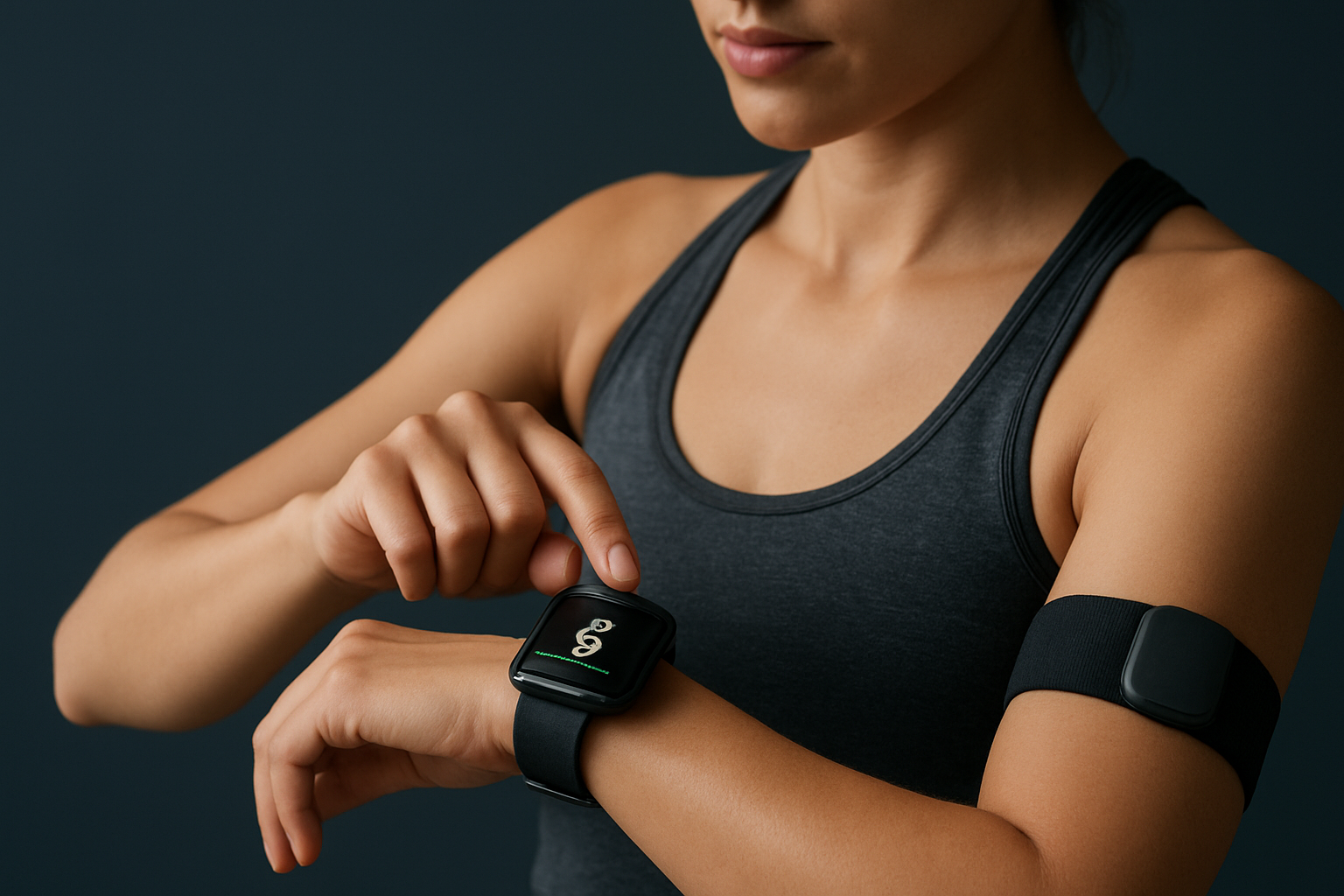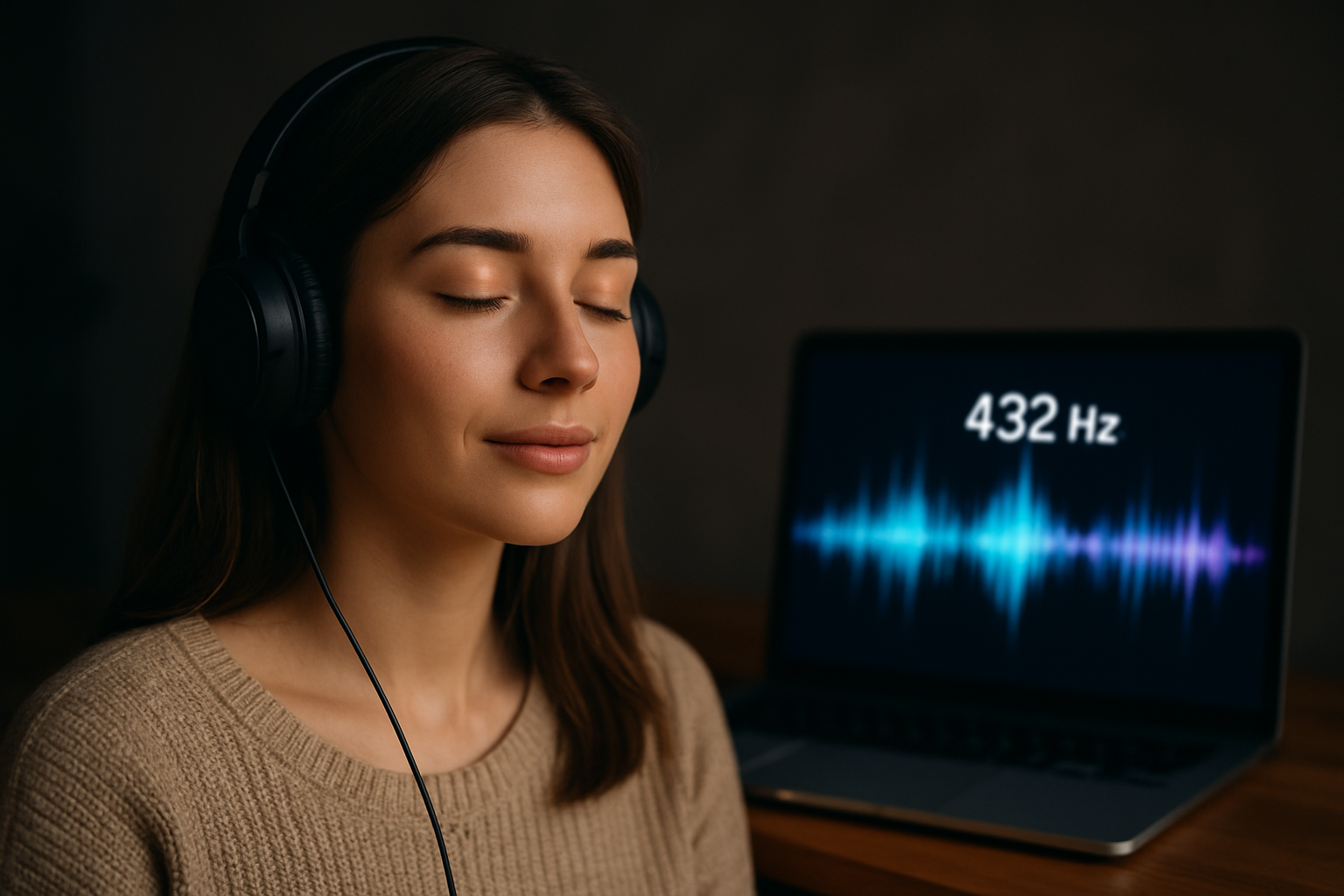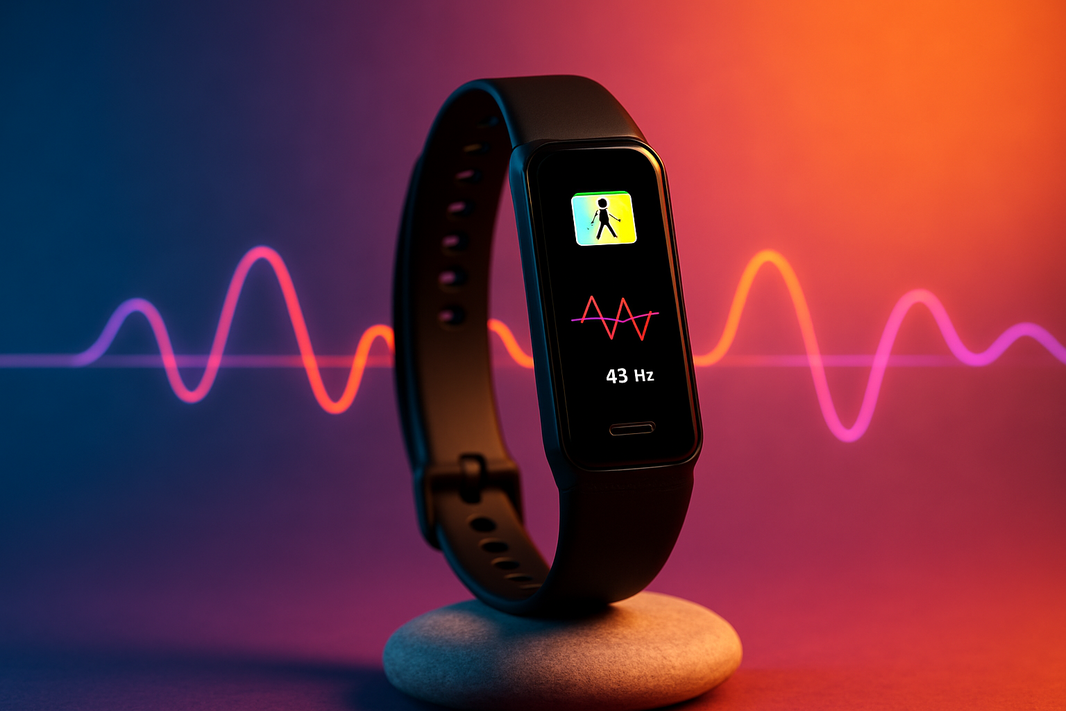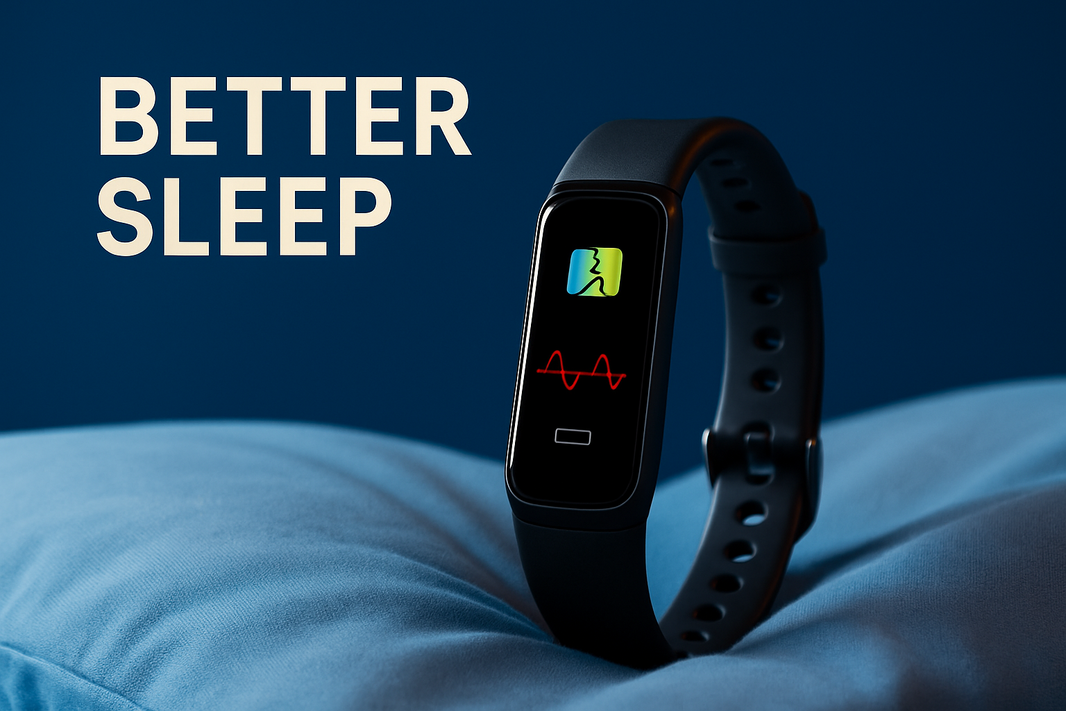How 432 Hertz Music and Wearable Frequency Therapy Can Transform Your Well-Being
If you have ever pressed play on a calming playlist and felt your shoulders drop, you already know sound can shift your state; now imagine pairing that effect with calming music—some listeners prefer 432 hertz tuning—and wearables that read your body’s signals in real time to nudge you toward balance, clarity, and deeper rest. I still remember the first rainy Sunday I tried 432 hertz music while journaling; the room felt warmer somehow, like the sound had edges softened by velvet, and my breathing slowed without effort. The experience got me curious about frequency therapy, which is essentially the idea that gentle, targeted vibrations can support the body’s natural rhythms rather than bulldozing them with harsh inputs. If you have been looking for a non-invasive, drug-free way to reduce stress and sleep better, you are in the right place to explore how sound and sensors can work together.
What 432 hertz music Really Is (And Isn’t)
Let’s clear up the basics in plain English: most modern instruments are tuned to A4 at 440 Hz (hertz), but in 432 Hz (hertz) tuning, that same A4 pitch is slightly lower, which some listeners describe as rounder, warmer, and more resonant in the body, like the difference between bright noon sun and late-afternoon glow. The physics conversation can get heated online, yet the practical question is simpler: does this tuning help you relax, focus, or sleep, and if so, can you use it intentionally as part of a self-care routine you will actually keep. Even without grandiose claims, there is a plausible pathway, because music at any pitch can influence breath rate, heart rhythm, and brainwave patterns, and a gentler tuning might make it easier for some people to downshift into a calmer state when they need it most. Think of it as choosing the tea that feels right for your mood rather than debating the metaphysics of teacups on the internet.
Musicians often describe 432 hertz music as having fuller overtones and a more relaxed sensation in the chest and belly, and while that is subjective, subjective is exactly what counts when you are trying to unwind after a long day. Psychoacoustics, the study of how we perceive sound, suggests that tiny changes in pitch and timbre can alter comfort and tension, which is why film composers shape anxiety with dissonance and relief with consonance. If you have ever synced your breath to a song, you have felt entrainment, the tendency of rhythms to align, and using softer, slower tracks can gently guide your nervous system toward rest and digest mode rather than fight or flight. The key takeaway is pragmatic: if 432 hertz music helps you settle, it is a useful tool, and tools get powerful when you combine them with precise, body-aware technology.
| Topic | 432 Hz (hertz) | 440 Hz (hertz) |
|---|---|---|
| Concert Pitch for A4 | 432 Hz (hertz) | 440 Hz (hertz) |
| Perceived Feel | Warmer, rounder, relaxing to some listeners | Brighter, modern standard, crisp articulation |
| Listening Goal | Calm, meditation, yoga, sleep | General listening, pop, classical standardization |
| Science Status | Anecdotal benefits; research is emerging | Widely adopted standard; neutral baseline |
From Sound to Cells: How Frequency Therapy May Support Healing
Here is the short version of a long story: the body communicates with tiny electrical and mechanical signals, and gentle, low-intensity frequencies can sometimes coax those signals back toward healthy patterns, a bit like tapping a metronome to steady the beat. When stress is high, muscles guard, breathing climbs into the chest, and sleep falls apart, which many people feel even if they have never seen an EEG (electroencephalography) readout; sound and vibration can invite the autonomic nervous system (ANS) to tilt toward parasympathetic calm. You can hear this in slow, steady music that naturally lengthens your exhale and quiets your mind, and you can feel it in targeted micro-stimuli that remind tense tissue to let go. The goal is not to overpower the body but to partner with its own rhythms so it can do what it is wired to do: repair, recover, and re-balance.
Watch This Helpful Video
To help you better understand 432 hertz music, we've included this informative video from Meditation and Healing. It provides valuable insights and visual demonstrations that complement the written content.
What makes frequency therapy compelling today is not just the audio but the feedback, because when you can see or sense your body’s response in the moment, you can adjust inputs intelligently instead of guessing. Biofeedback tools track simple markers like breath cadence, temperature shifts, and skin conductance while music and microcurrents provide the nudge, and over time you train a calmer baseline the same way you would train a muscle. If you have ever watched HRV (heart rate variability) rise after a slow-breathing session, you already know the feeling of a small win that compounds into better days and nights. This is where the right wearable changes everything for people who want non-invasive, drug-free support that fits into life rather than taking it over.
Why Wearables Change the Game: Biosensors, Feedback, Precision
Anywhere Healing enters here as a quiet but powerful ally, offering frequency wearables designed to help your body regain balance without needles, pills, or side effects that derail your day. Powered by advanced biosensors that read the body’s signals, the devices sense patterns associated with stress and sleep disruption, then deliver precise, low-intensity frequencies tailored to your current state. That combination—listen, interpret, respond—distinguishes a modern wearable from passive tools, because it gives you personalized support rather than one-size-fits-all noise. In practice, users describe less muscle guarding, an easier time falling asleep, and a clearer, steadier energy, which aligns with Anywhere Healing’s focus on circulation, detoxification support, cellular communication, and immune resilience you can actually feel.
You have options too, which matters because every body is different and every day is different, and flexibility is the friend of consistency when you are building a new habit. Frequana brings whole-body balance for people managing stress and heavy workloads, Alpha Wearable leans into deep calm and sleep support, and Charisma Ring offers subtle, on-the-go steadiness and social ease you can wear from gym to dinner. Each device is non-invasive and drug-free, designed to complement natural recovery processes in the background while you live your life in the foreground. Pairing these wearables with calming audio you provide gives you a one-two rhythm: sound to soothe the mind, and frequencies to nudge the body toward stable, restorative patterns.
| Device | Ideal For | Biosensor Focus | Frequency Delivery | Notable Benefits |
|---|---|---|---|---|
| Frequana | Daily stress, post-workout tension, all-around balance | Advanced biosensors that read the body’s signals | Precise, adaptive micro-frequencies | Supports circulation and detoxification; promotes steady energy |
| Alpha Wearable | Sleep struggles, anxious evenings, overactive mind | Calm-state detection through skin and pulse patterns | Sleep-optimized sequences for relaxation | Helps reduce sleep latency and night awakenings |
| Charisma Ring | On-the-go composure, focus at work, social ease | Subtle stress-signal sensing for quick adjustments | Quiet, brief frequency pulses | Enhances mental clarity and emotional steadiness |
A Practical Routine: Pairing 432 hertz music With Anywhere Healing
Let’s make this wonderfully simple, because complex routines are the ones we quit when life gets loud, and the whole point here is support that fits in your pocket. Start with a 10 to 20 minute 432 hertz music session at a comfortable volume, sitting upright or lying down with a neutral spine, and choose tracks with gentle, sustained tones rather than busy percussion. Snap on your Anywhere Healing wearable before you press play so the biosensors can read your baseline and adapt the frequency delivery as you breathe and settle. If you like structure, try a 4-second inhale and 6-second exhale for a few cycles, then let your breath find its own relaxed tempo as the music and micro-frequencies do their work.
- Morning reset: 12 minutes of 432 hertz music plus Frequana to smooth the jump from sleep to screens.
- Afternoon rescue: 8 minutes of slow listening with Charisma Ring before your toughest meeting.
- Evening wind-down: 20 minutes with Alpha Wearable, dim lights, and a gentle track to shorten sleep latency.
- Weekend recovery: 15 minutes post-workout to release muscle guarding and support circulation.
Pro tip: keep a tiny note on your phone where you log start time, end time, and one word for how you feel, because observing progress keeps you coming back when motivation dips. If you have a consumer device that tracks HRV (heart rate variability) or sleep quality, look for trends rather than obsessing over any single night, and remember that stress relief is more like gardening than light switches. Three or four sessions a week beats one epic session because the nervous system loves repetition with kindness, not shock and awe. By mixing 432 hertz music with adaptive frequency support, you give your brain and body the same message in stereo: you are safe, you can let go, and recovery is available.
Real-World Stories and Emerging Data
There is the science we are still learning and then there is the science of your own experience, which is why I love simple case snapshots that feel human rather than abstract. Maya, a designer and mom of two, used Alpha Wearable and 432 hertz music on her couch every evening for three weeks, and she noticed her mind stopped rehearsing tomorrow’s tasks on a loop, which alone cut her time-to-sleep dramatically. Caleb, a weightlifter, used Frequana after heavy leg days and reported less next-day tightness along with calmer mood during long commutes, and he stuck with it because the routine took 15 minutes and zero willpower. None of this is a medical diagnosis, but it is the kind of practical support many of us are chasing with busy lives and big responsibilities.
Wider context helps too: roughly one in three adults do not get enough sleep according to public health agencies like the CDC (Centers for Disease Control and Prevention), and about one in five adults live with chronic pain in surveys summarized by the WHO (World Health Organization), so you are not imagining your struggle. Early pilot programs and biofeedback studies often note improvements in HRV (heart rate variability), falling asleep faster, and lower perceived stress scores after consistent relaxation training, and frequency-assisted sessions slot neatly into that tradition. Anywhere Healing supports this everyday data-gathering mindset by making it easy to combine listening with adaptive signals and then observe your own trends over weeks, not hours. That is how you turn interesting theory into a meaningful habit that helps you feel more like yourself.
| Marker | What It Reflects | How to Measure | What Users Often Report |
|---|---|---|---|
| HRV (heart rate variability) | Nervous system flexibility and stress recovery | Consumer wearables or app-based sensors | Gradual uptick with regular calm sessions |
| Sleep Latency | How quickly you fall asleep | Sleep trackers or simple bedtime notes | Shorter onset after evening routines |
| PSS (Perceived Stress Scale) | Subjective stress over the past week | Weekly self-check questionnaire | Lower scores with routine practice |
| Resting Heart Rate | Baseline load on the system | Morning reading before coffee | Small declines with better rest |
Buyer’s Guide: Choosing the Right Frequency Wearable
Picking a wearable is a bit like choosing running shoes, because the best option is the one you will actually use consistently, not just admire on your nightstand. Start with your primary goal: if sleep is the bottleneck, Alpha Wearable is designed to calm the overactive night mind; if stress is bursting at the seams from morning to night, Frequana offers broader daily balance; and if you want portable steadiness for meetings, travel, and errands, Charisma Ring is subtle and sleek. Look for advanced biosensors that read the body’s signals so your device can adapt instead of blasting the same pattern at you on repeat, and favor precise frequency delivery that targets relaxation without jolting your system. Reliability matters, but so does comfort, and Anywhere Healing leans into both with non-invasive, drug-free designs that feel natural to wear.
- Define your outcome: better sleep, steadier mood, stress reduction, or improved focus.
- Match the device: Frequana for whole-body balance, Alpha Wearable for sleep, Charisma Ring for on-the-go ease.
- Check sensing: choose wearables with biosensors that interpret your current state.
- Plan your routine: pair short sessions with 432 hertz music you actually enjoy (sourced separately).
Give yourself a simple two-week experiment to build trust with the process, and keep notes like a curious scientist of your own life because curiosity beats judgment every time. If you ever feel overwhelmed, shorten the session and soften the sound, and remember that steady change beats dramatic promises because your nervous system is built for cadence, not shock theater. Most of all, choose tools that help you feel safe and supported so you will return to them when stress spikes or sleep slips, because that is when consistency pays off. With 432 hertz music and Anywhere Healing working together, you create a loop of calm input and responsive support that makes better days feel less like chance and more like a practice.
Safety, Expectations, and Getting the Most from Your Practice
Let’s keep it honest and kind: frequency tools are allies, not magic wands, and your body’s context—hydration, nutrition, movement, relationships—still matters a lot, which is why small lifestyle nudges amplify the effects you feel. If you are sensitive to sound, start at a whisper volume and shorter tracks, and if you have a medical condition, consult your healthcare professional so new tools fit safely into your plan, because partnership always beats guesswork. Many people notice gentle shifts first—breath slows, muscles soften, mood feels less jagged—and bigger outcomes like deeper sleep often follow after regular practice rather than in one dramatic session. Anywhere Healing designs its wearables to support healthy circulation, detoxification, and cellular communication, giving your system the nudge it needs to do what it does best: self-correct and restore balance over time.
To keep momentum, anchor your routine to something you already do daily, like pouring coffee, brushing teeth, or opening your laptop, because habits love a trigger. Consider a weekly mini-review to glance at HRV (heart rate variability), bedtime notes, or one-word mood logs, and then adjust the time of day or track selection if you plateau. Some people love adding binaural beats while others prefer pure tones; your nervous system will tell you if it likes it, so listen to your body more than any opinion thread online. Close your loop each night with a short 432 hertz music track and a few quiet breaths, and let Anywhere Healing handle the frequency finesse in the background.
Here is the best part: nothing about this routine requires willpower you do not have, gear you cannot carry, or jargon you must pretend to understand, because the design is to meet you where you are on the most hectic days. Sound softens the edges of your mind, and biosensors notice when your body wants a different nudge, which is exactly the kind of collaboration most of us need when our plates are already full. If natural cellular rhythms have drifted from harmony—showing up as stress, poor sleep, or that foggy meh—then responsive support helps you return to center without a fight. And when 432 hertz music meets Anywhere Healing’s precise frequency delivery, you get steady, practical support that feels grounded, personal, and quietly powerful.
For our final thought before we wrap, remember that your nervous system learns by repetition and kindness, not force, which is why these practices flourish with small, regular sessions over time. Anywhere Healing’s wearables use biosensors to detect and correct disrupted signals in the moment, so your routine can flex with your day rather than demand a perfect schedule. Keep your playlist ready, your device charged, and your expectations gentle, and let the combination of calm sound and precise support become one of the easiest health habits you have ever kept. If you want a peaceful nudge right now, press play on 432 hertz music and feel how your next breath arrives a little softer and deeper.
Before the closing reflection, one last note for searchers who skim: yes, 432 hertz music can be a powerful ally, and it becomes even more effective when paired with adaptive, non-invasive frequency support you can wear anywhere.
The wellness duo of sound and sensors is small, simple, and surprisingly strong—and it scales beautifully as your needs change.
Imagine the next 12 months with fewer sleepless nights, steadier energy, and a body that bounces back faster because your daily routine finally aligns with how your nervous system learns.
What might change in your life if calm, clarity, and better sleep became your new normal—and what is the first tiny step you will take today?
Additional Resources
Explore these authoritative resources to dive deeper into 432 hertz music.
Elevate 432 Hertz Music with Anywhere Healing Wearables
Experience advanced biosensors that read the body’s signals as Anywhere Healing’s wearables detect and address disrupted patterns, supporting better sleep, reduced stress, and overall balance.
Explore Wearables Now







